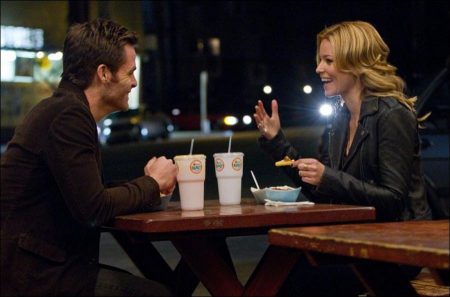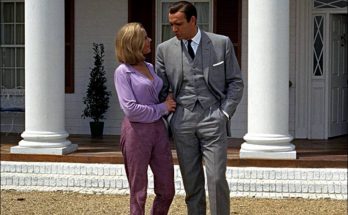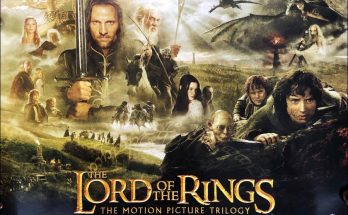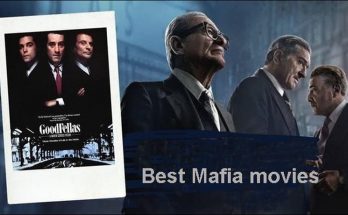People Like Us was filmed entirely in Los Angeles and the surrounding area. Instead of iconic landmarks and tourist attractions, the locations the filmmakers chose were more grassroots, hometown Los Angeles—the L.A. most tourists never see. As producer Bobby Cohen explains,
“There is something special about shooting in real locations. There is a texture to them that you can’t rebuild. It makes a difference. That had been one of Alex’s [Kurtzman, director] main things from the get-go—he wanted to shoot the parts of L.A. that don’t normally get attention.”
Continues Cohen, “We’re not shooting the tourists’-eye view of L.A. As a born New Yorker, it’s been fun shooting in more offbeat neighborhoods. Alex intuitively understands the moods of these places and has done a very good job of capturing those moods on film.”
Director Alex Kurtzman comments, “I’m a native Los Angeleno and my city is not the glitzy, cliched Los Angeles that I feel like I see on screen in other films. I felt strongly about representing the L.A. that was the story of the movie and was one that others had never seen.”
One of the scenes in the film was shot at Rhino Records, one of the oldest record stores still in existence, and famed Hollywood High School became the setting for the Toluca Park Middle School. Old-time eateries Henry’s Tacos, Cole’s French Dip and Neptune’s Net were featured to lend authentic L.A. flavor—no pun intended.
Shooting in real locations, such as the houses, restaurants, schools and churches used in the film, presents challenges for lighting—walls cannot be moved and there are usually not high ceilings to accommodate the lights. But director of photography Sal Totino was a genius at coming up with simple, yet elegant ways to light the film that did not sacrifice the high quality of the filming.
Director Alex Kurtzman relates, “To Sal Totino, it isn’t about what’s the most beautiful lighting scheme. It’s about: how is this frame telling the emotional story of the characters? That’s the first question that he asks. He translates an emotion beautifully. I can’t imagine ever working with anyone else.”
Production designer Ida Random brought a very real look to the film, as if the audience were actually brought into the living room of a familiar house. Without overdoing the production design, Random was able to create an intimacy and comfort level that draws the viewers in, but never visually bores them.
Much of the music business memorabilia in the “Jerry’s Study” set belongs to Jody Lambert’s father Dennis Lambert, a Songwriters Hall of Fame nominee whose hits as writer and/or producer include “Ain’t No Woman (Like The One I Got) “, “Rhinestone Cowboy”, “Baby Come Back” and “Nightshift.” Lambert showed production designer Ida Random a storage unit full of his father’s memorabilia and she used it in the set, including photographs of Dennis Lambert himself and his actual Gold records.
Costume designer Mary Zophres continued the “real” look with her choice of clothing for the characters and the extras. Zophres says, “It’s not the kind of movie where you want the clothes to be front and center. They tell the story of who the characters are and then you move on. You shouldn’t be aware of the clothes. They should just sort of tell the story and go away.”
In dressing Chris Pine’s character Sam, Zophres had him in an expensive suit that is above his means at the start of the film, but when he goes to L.A. he only packs casual clothes for what he thinks is a 48-hour stay: two pairs of jeans, three T-shirts, a jacket and two button down plaid shirts.
For Elizabeth Banks’ character Frankie, Zophres chose a leather jacket that she wears a lot in the beginning of the movie. Then as the story progresses, she loses the jacket as her character evolves. The subtle shift in costuming was deliberate to parallel the storyline.
In dressing Michelle Pfeiffer’s character Lillian, Zophres took into account that the character had cared for her dying husband for some time and probably lost some weight without knowing it, thus she dressed her in slightly looser clothes.
Zophres was also very aware of the background costuming. “The background helps tell the story. We’ve had very specific scenes where there should be a look to where were, like we were at Cole’s downtown versus The Standard. Those are two hugely different looks. One is an old diner and the other is a trendy nightclub. You reveal those two places through how you dress the people in the background. It is a very important element to me.”
Related Lnk: View the Full Production Notes for People Like Us
Views: 69




